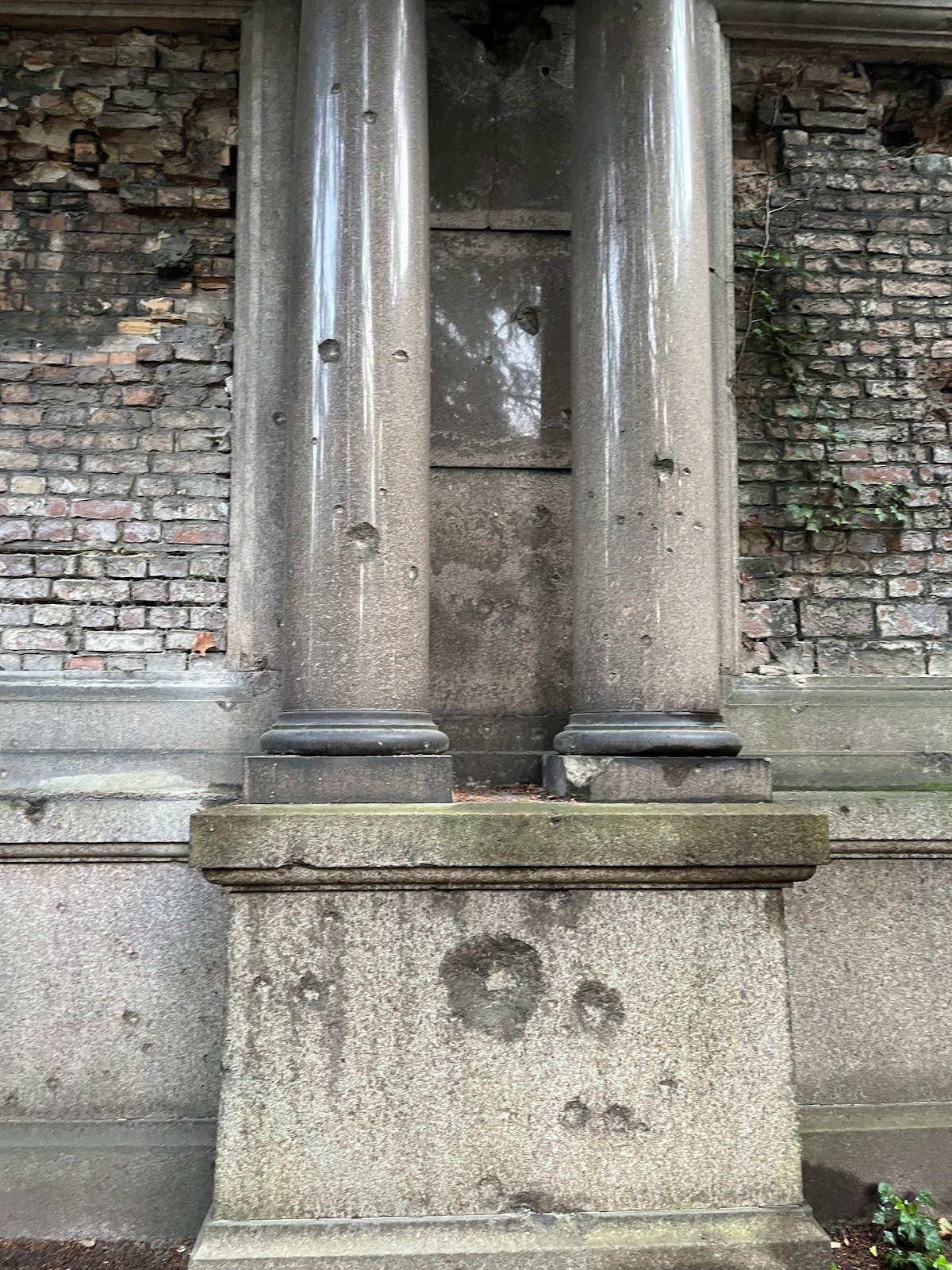Our Search for Henrietta and the Fractured Stories of Berlin
November 24, 2025
by Samuel De Lemos, Cohort ‘24
My summer residency began in Rome and Tuscany, cities bathed in beauty, romance, and continuity. Then came Berlin — gritty, restless, alive with graffiti and a nervous pulse. Compared to Rome’s warmth and Tuscany’s serenity, Berlin felt fractured, scarred yet strangely bohemian.
Howard Caygill, who co-led the Berlin, Germany summer residency, explained that Berlin is young compared to other European capitals. Hitler himself despised it, dreaming of razing it to build a new ideological city. Today Berlin remains stitched together from fragments: new construction beside buildings that survived the bombings of World War II.
That fractured character became the backdrop for a pilgrimage my colleague Jon Carver and I made: to find the grave of my ancestor, Henrietta Herz De Lemos.
The search began in the middle of a Caribbean carnival. While crowds pressed joyously one way, Jon and I moved the other, toward Friedhof II der Jerusalems- und Neuen Kirchengemeinde, a Christian cemetery improbably planted in the midst of festivity. We had no map to carry, only the large guide posted at the entrance. Inside, the grounds opened vast and labyrinthine. Soon rain poured in torrents, and we sheltered under a tree. In that pause, I remembered that our search itself had become another thread in the tapestry of Berlin stories.
After nearly an hour of scouring the cemetery, Jon finally spotted it: a tall black Gothic cross gilded in gold, inscribed Henriette verwittwete Hofräthin Herz, geb. de Lemos.
.jpg)
Henrietta’s life bore its own fracture. Born in 1764, she converted to Christianity, after her husband and mother died, casting herself out of her ancestral inheritance. Her husband moved in the circle of Immanuel Kant and the Haskalah, and she was known as a celebrated salonnière of Enlightenment Berlin. Her grave lies not in Jewish earth but apart, beneath a black Christian cross.
Nearby we noticed a wall scarred with bullet holes — remnants of Germany’s violent past still visible in stone. These marks, beside Henrietta’s grave, recalled the past’s catastrophe and wreckage, it was seeing Howard’s lecture come to life.
Before her grave, I placed a kippa on my head and recited the Kaddish (prayer of the dead) in Hebrew — the language that nearly became outlawed, yet survived as the tongue of memory and story. In that prayer, my Henrietta was no longer alone and as Jewish tradition dictates I placed a stone on her earthen bed and lit her a whispering candle.
Later, at an exhibit, I stood before Paul Klee’s Angelus Novus, the image of the Angel of History. Its strange, wide-eyed figure gazes backward in horror while being blown forward into the future. Seeing it in Berlin, after the cemetery, I felt the parallel: our search for Henrietta was another fragment of that backward gaze, another survival story carried forward—another puzzle in Berlin’s fragmented past.

Berlin taught me that philosophy is not abstract. It is inscribed in graves, scarred into walls, painted into angels, alive in cities. In searching for Henrietta, I found a fragment of myself — a fractured poem, of our past cast as memory. And for that, I owe a debt of gratitude: to Jon, who walked besides me; to Howard, whose lectures on Berlin framed the experience; and to IDSVA’s summer residency, which made possible this passage from Rome and Tuscany to Berlin, from harmony to fracture, and from history into shared memory.
